Pop Culture
5 of the Most Memorable Artist-Designed Olympics Posters
Artists like Robert Rauschenberg, Rachel Whiteread, and Eduardo Terrazas have made iconic Olympics posters.
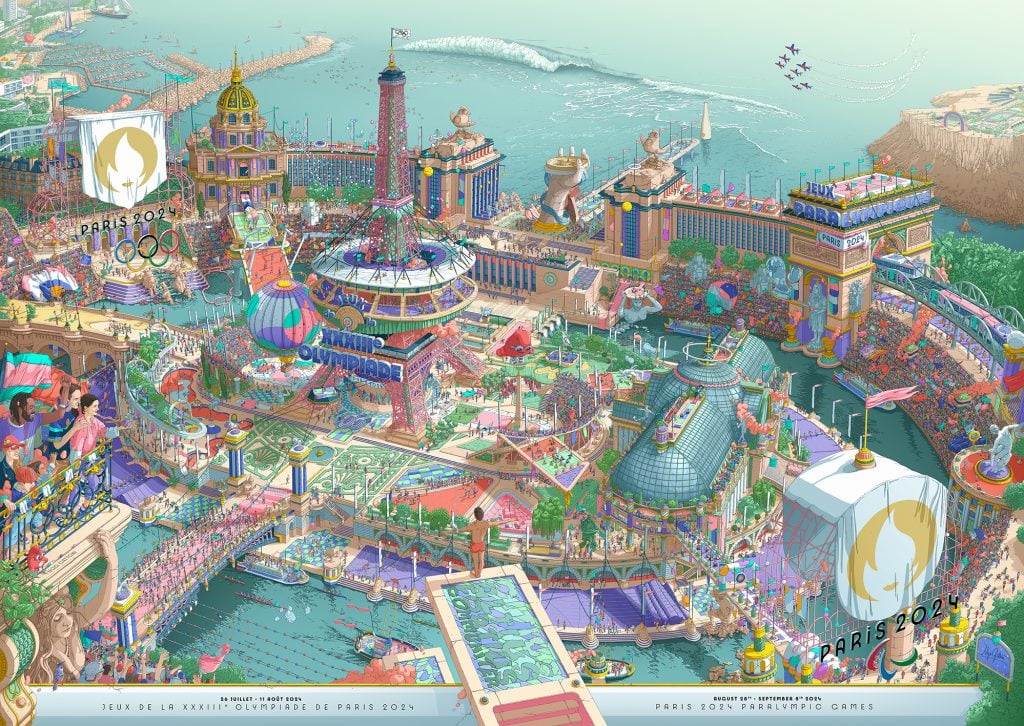
Artists like Robert Rauschenberg, Rachel Whiteread, and Eduardo Terrazas have made iconic Olympics posters.

Jo Lawson-Tancred

To celebrate this summer’s Olympics and Paralympics in Paris, the organizers have released two new posters by French illustrator Ugo Gattoni. Placed side-by-side, the artworks create a richly detailed, colorful map that shows the French capital coming alive with a flurry of activity and excitement. A fantastical reimagining of the city merges many beloved monuments like the Eiffel Tower, the Arc de Triomphe, and the Grand Palais into a huge open-air stadium filled with ecstatic crowds cheering on world class racers.
“[The design’s] originality lies in its surreal and utopian aspect, both in its composition and in the thousands of details it features,” said Gattoni, who packed the semi-immersive posters with charming vignettes representing 29 Olympic sports and 18 Paralympic sports. This impressive—you could even say “olympian”—feat was managed thanks to a whopping 2,000 hours of drawing over a period of six months. Who said art isn’t an serious sport? More exciting still, for the world’s aesthetes-turned-athletes, a new public artwork to commemorate the games by Alison Saar will also be unveiled in Paris next week.
On the eve of Paris 2024’s hotly-anticipated opening ceremony on July 26, Artnet News takes a look back at some of the most memorable artist-designed Olympics posters from history.
Rachel Whiteread, London 2012
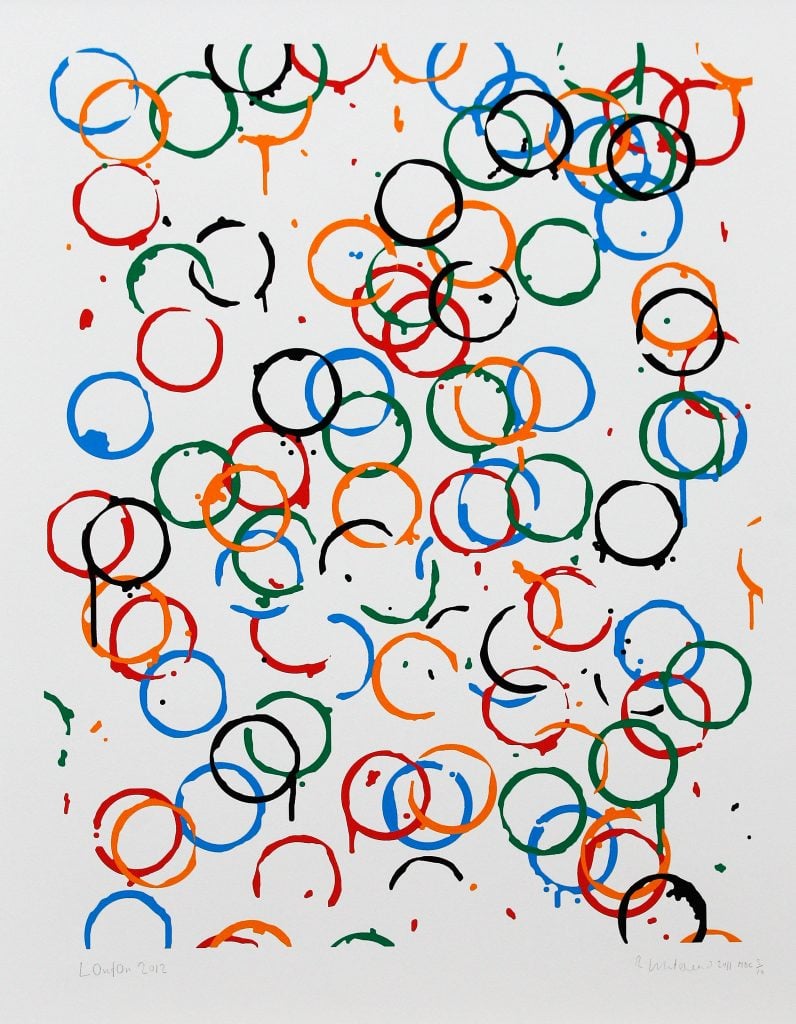
Commissioned poster by Rachel Whiteread for Olympic and Paralympic games in London in 2012. Photo: Paul Gilham/ Getty Images.
After the London 2012 emblem was panned and derided, the organizers commissioned some of Britain’s best—including Chris Ofili, Tracey Emin, Bridget Riley, and Howard Hodgkin—to propose designs for the official poster. The winner was Rachel Whiteread’s colorful, abstract reinterpretation of the classic Olympics logo, five rings that represent the continents of Europe, the Americas, Africa, Oceana, and Asia. Resembling the rings left on a pub table after several rounds of beer, you could say it captured the spirit of London.
Robert Rauschenberg, Los Angeles 1984
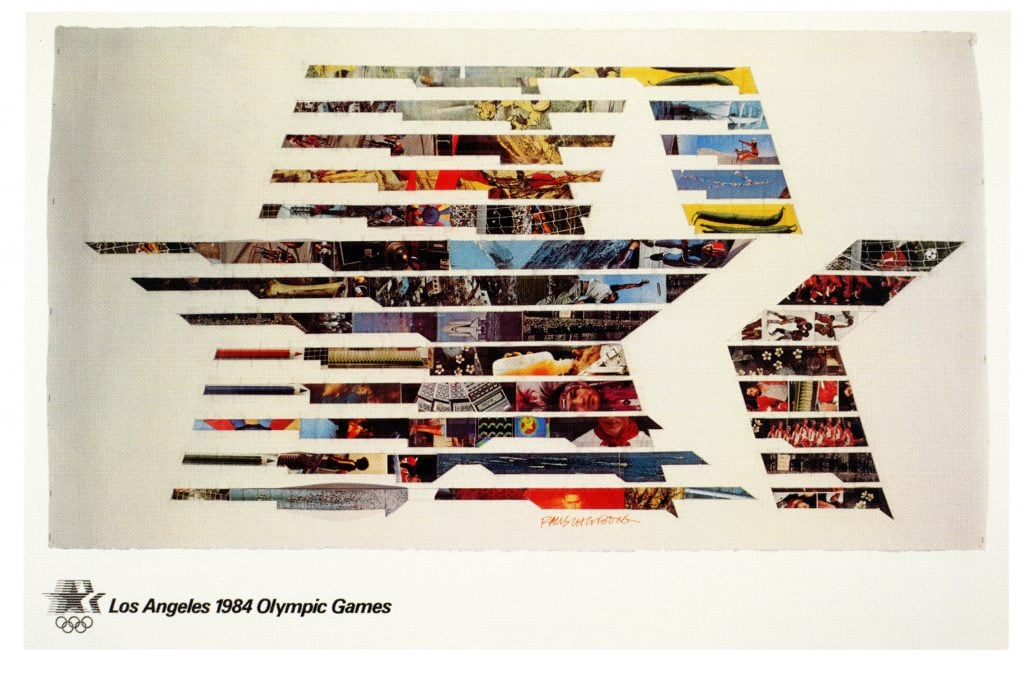
Robert Rauschenberg’s poster for the Olympic Games in Los Angeles in 1984. Photo: Fireshot/ Universal Images Group via Getty Images.
A veritable “who’s who” of midcentury artists submitted designs for the 1984 Olympics in Los Angeles, including David Hockney, Lynda Benglis, Roy Lichenstein, and John Baldessari. Of the 16 contenders, Robert Rauschenberg came out on top when his design was selected as the games’ official poster. Peering closely at his photomontage, which is arranged as a sleek “star in motion,” the viewer can find a few examples of sporting activity mixed up with seemingly random images that speak to the era, like stacks of calculators, a man in a fetching red neckerchief, and a rocket. Conceptual!
Yvon Laroche, Montréal 1976
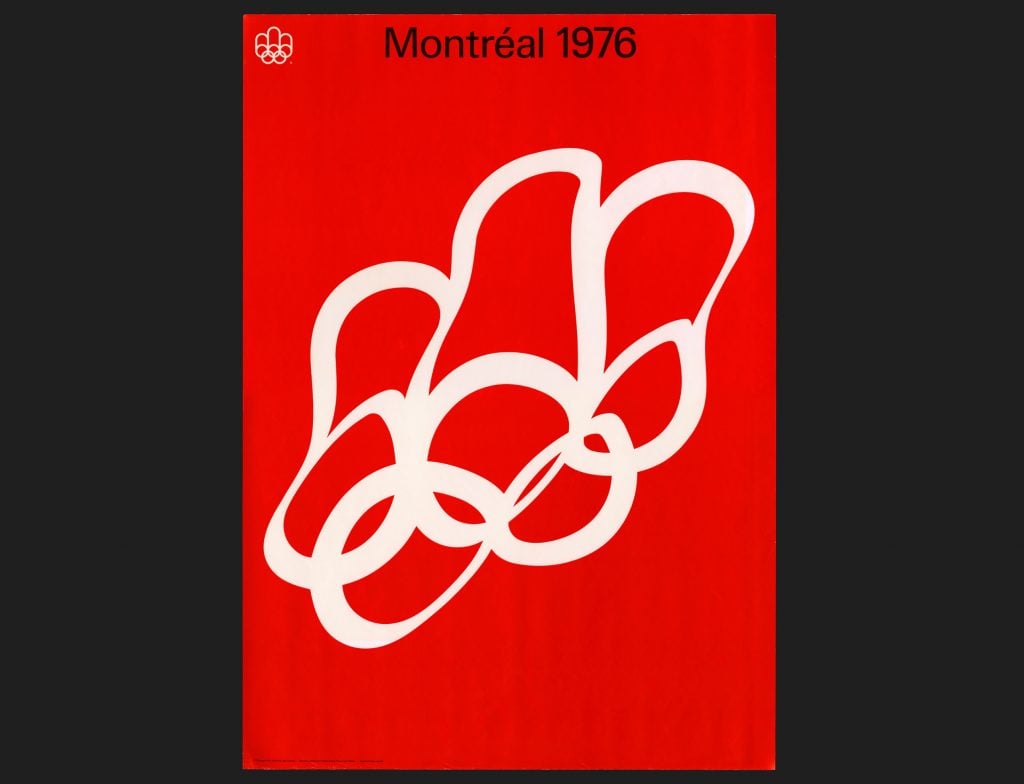
Yvon Laroche’s design for the Olympic Games in Montreal in 1976. Photo courtesy of Canada Modern.
Creating a fun new twist on the classic five Olympics ring, Canadian graphic designer Yvon Laroche made the simple but effective “Flag in Motion” design for the Montreal 1976 edition. A wider selection of posters were also hung around town, including Raymond Bellemare’s “Mascot,” featuring a classic Canadian beaver.
Eduardo Terrazas and Lance Wyman, Mexico 1968
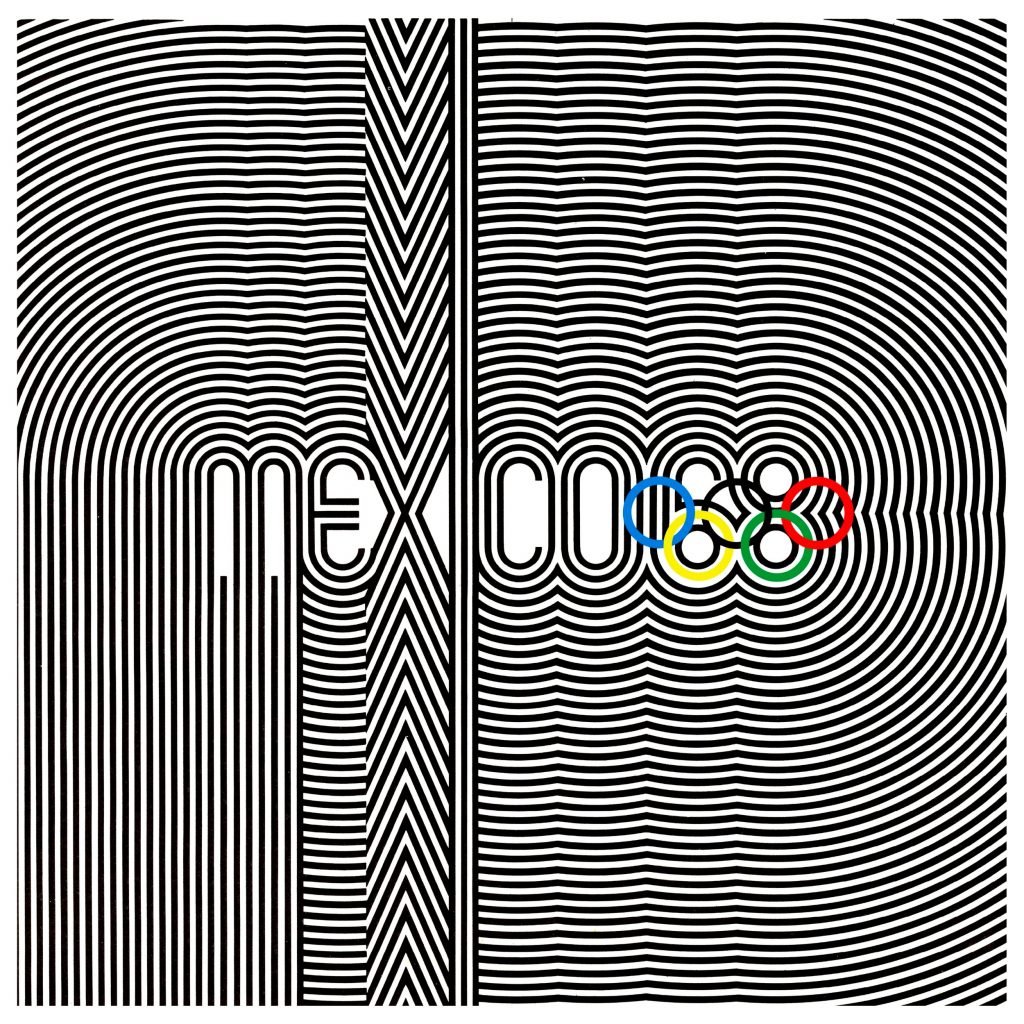
Eduardo Terrazas and Lance Wyman’s poster for the Olympic Games in Mexico City in 1968. Photo courtesy of the artist and Timothy Taylor.
Co-designed by Mexican artist and architect Eduardo Terrazas and American designer Lance Wyman, the minimalist, monochromatic poster for Mexico 1968 was clearly influenced by Op art, a movement that was popular at the time. This contemporary look was also a nod to the country’s traditional Huichol “tablas” textiles that typically feature patterns made from radiating lines of thread. Now aged 88, Terrazas is having a moment, with one of his geometric abstractions selected for the “Foreigners Everywhere” main exhibition at this year’s Venice Biennale and a new solo show “Encounters,” which just opened at Timothy Taylor gallery in London.
Olle Hjortzberg, Stockholm 1912
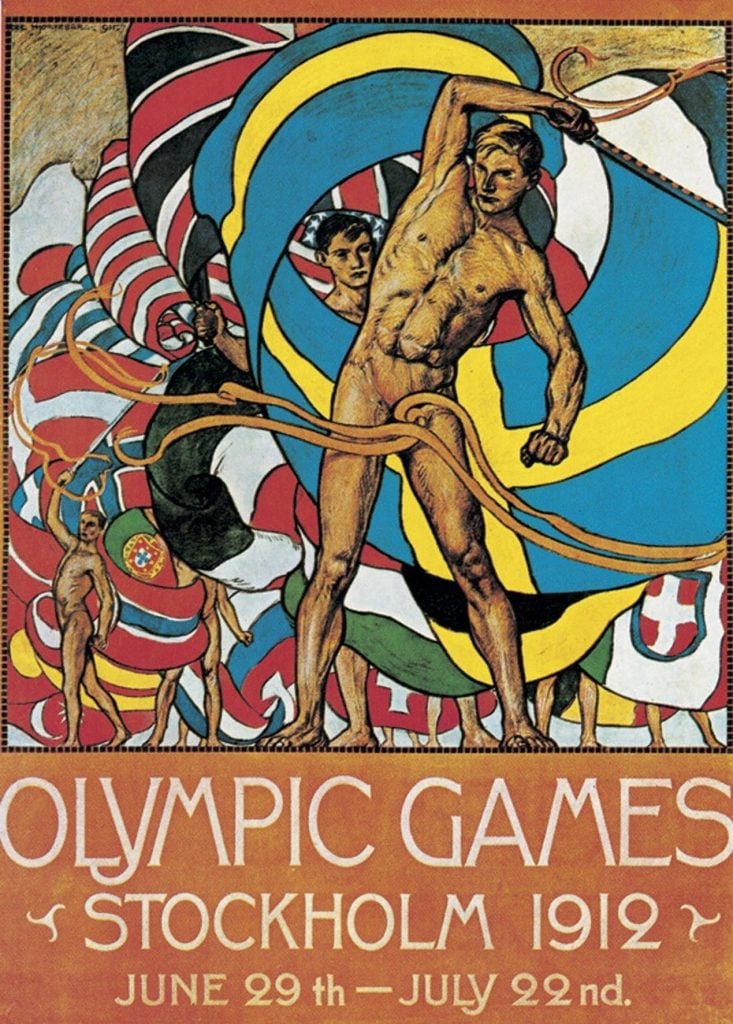
The first official Olympics poster was for the 5th Games of modern times in Stockholm in 1912. Photo: Photo 12/ Universal Images Group via Getty Images.
The very first official poster for the Olympics was designed for the fifth modern edition in Stockholm in 1912 by Swedish painter and illustrator Olle Hjortzberg, who is best remembered for his church murals. His poster, chosen from an array of proposed designs, featured athletes waving their flags as part of the triumphant march of nations. The central figure is a classically idealized Adonis-type brandishing a particularly prominent Swedish flag. He is followed by representatives from many more countries including most of Western Europe, Russia, Japan, China, and the U.S.